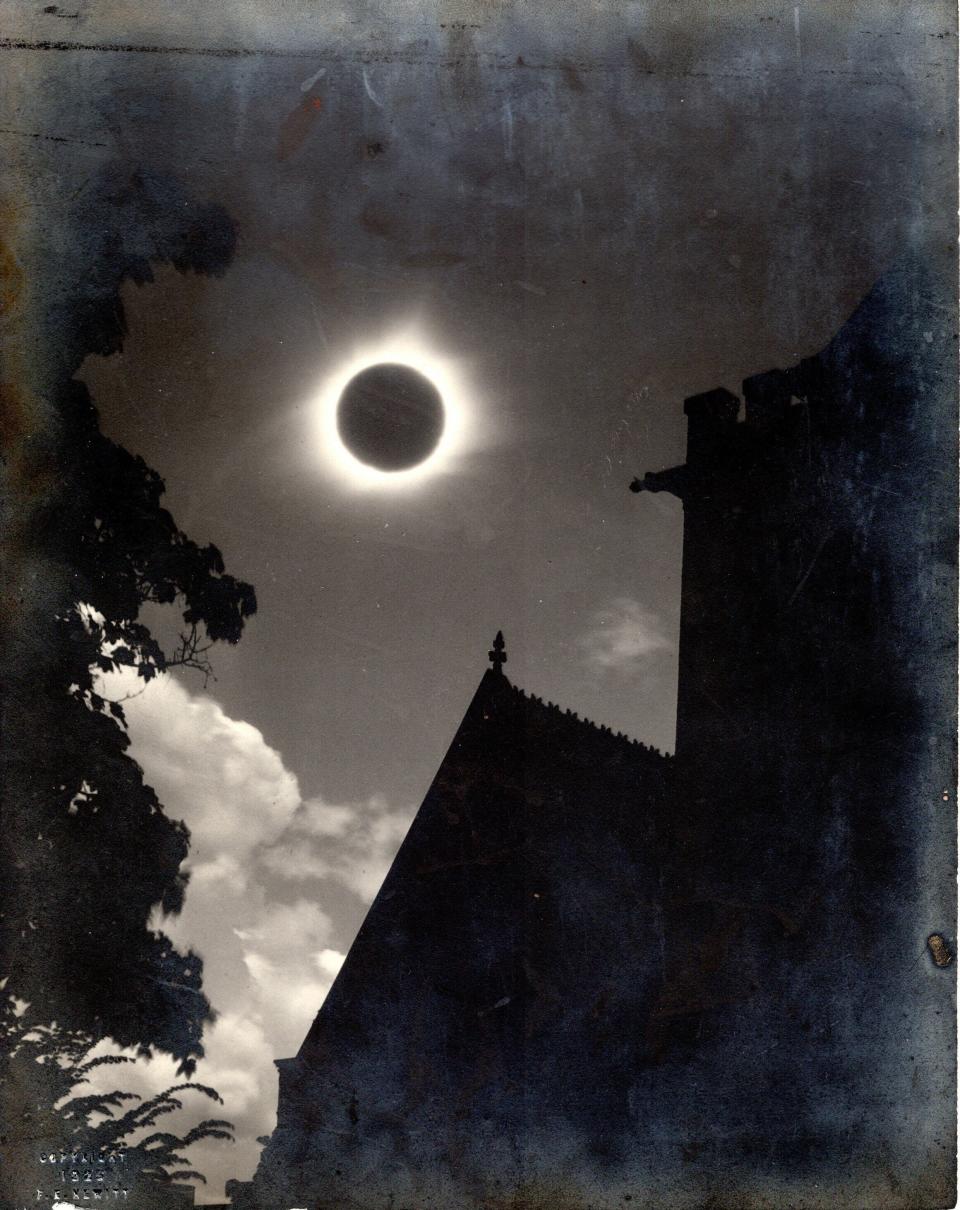How one Corning photographer captured a memorable image of a solar eclipse, 99 years ago
Total eclipses used to terrify people, or at least worry them. In 1886, the fictional Alan Quartermain saved his neck (he had blundered into a nationwide power struggle) by correctly predicting an eclipse. Back in ancient times an eclipse reportedly occurred during a battle between the Medes and the Lydians, provoking them to lay down their arms and quickly make peace.
Nowadays we calculate eclipses decades in advance, with high precision. So we get prepared, we make our plans (or we plan to ignore the whole thing), we learn how to observe safely. Photographers set up their equipment, and hope for the best from the weather.
That’s what Frank E. Hewitt did, 99 years ago in Corning.
Between 1901 and 1950 this was the only solar eclipse anywhere in New York state, and its “path of totality” — that narrow band in which the sun is completely, if briefly, covered by the moon — was right on top of us.
Frank E. Hewitt twice ran for mayor as a Prohibitionist, polling well behind the major parties though well ahead of the Socialists. But he made his living as a professional photographer. (“Hewitt’s Ground Store Studio. REAL SERVICE in any branch of photography. Portrait. Commercial. Kodak Finishing. Enlargements of all kinds. PICTURE FRAMING.”)

On Jan. 24, 1925, Hewitt set up by Christ Church (Episcopal), just a few blocks from his home and shop on Pine Street, using glass plates … which were already pretty much obsolescent by that time. He took multiple shots, which would have required some very quick-but-careful juggling, and captured the entire sequence of the eclipse.
Which, if we understand correctly, was better than Cornell University did. Apparently Ithaca was overcast, so all their preparations came to naught.
More: What time does the April 8 solar eclipse peak in the Corning area? When, where to watch
His image of the totality is breathtaking, capturing the church’s silhouette as well. But it also introduces a history mystery. If this is January ... what's all that foliage on the left side of the photo?
His name, and the 1925 copyright, are embossed in the lower left, that's definitely Christ Church, Corning-Painted Post Historical Society still has his sequential plates, and there wasn't another eclipse for decades on either side, but still — all those leaves, and more?
We took this question to someone with decades of experience in the florist-and-arborist field. Our consultant studied the photo for a spell, then said, “Oak leaves. They don't fall until the following spring.”
"And down lower?" we asked.
“That's an evergreen.”
And when we looked again, that seemed embarrassingly obvious.
More: What time does April 8 solar eclipse peak in the Hornell area? When, where to watch
So, mystery solved, and a dramatic photo to immortalize the most transient of events. As always, the earth rolled on, and so did the sun and the moon. We go back about our business.
And one day, many years hence, they'll all line up again.
-- Kirk House, of the Steuben County Historical Society, writes a history column appearing in The Leader and The Spectator.
This article originally appeared on The Leader: Corning photographer captured memorable image of 1925 total eclipse

